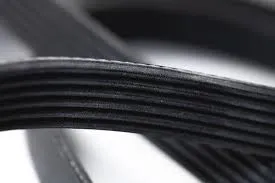- Arabic
- French
- Russian
- Spanish
- Portuguese
- Turkish
- Armenian
- English
- Albanian
- Amharic
- Azerbaijani
- Basque
- Belarusian
- Bengali
- Bosnian
- Bulgarian
- Catalan
- Cebuano
- Corsican
- Croatian
- Czech
- Danish
- Dutch
- Afrikaans
- Esperanto
- Estonian
- Finnish
- Frisian
- Galician
- Georgian
- German
- Greek
- Gujarati
- Haitian Creole
- hausa
- hawaiian
- Hebrew
- Hindi
- Miao
- Hungarian
- Icelandic
- igbo
- Indonesian
- irish
- Italian
- Japanese
- Javanese
- Kannada
- kazakh
- Khmer
- Rwandese
- Korean
- Kurdish
- Kyrgyz
- Lao
- Latin
- Latvian
- Lithuanian
- Luxembourgish
- Macedonian
- Malgashi
- Malay
- Malayalam
- Maltese
- Maori
- Marathi
- Mongolian
- Myanmar
- Nepali
- Norwegian
- Norwegian
- Occitan
- Pashto
- Persian
- Polish
- Punjabi
- Romanian
- Samoan
- Scottish Gaelic
- Serbian
- Sesotho
- Shona
- Sindhi
- Sinhala
- Slovak
- Slovenian
- Somali
- Sundanese
- Swahili
- Swedish
- Tagalog
- Tajik
- Tamil
- Tatar
- Telugu
- Thai
- Turkmen
- Ukrainian
- Urdu
- Uighur
- Uzbek
- Vietnamese
- Welsh
- Bantu
- Yiddish
- Yoruba
- Zulu
Dec . 17, 2024 08:45 Back to list
Understanding V-Belts for Efficient Power Transmission in Various Applications
Understanding V-Belts Essential Components in Mechanical Systems
V-belts are indispensable power transmission components widely used in various machines and equipment across numerous industries. They play a crucial role in transferring mechanical energy from one part of a machine to another, making them vital for efficient operation in automotive engines, industrial machinery, and household appliances. In this article, we will delve into the anatomy, functionality, importance, and maintenance of V-belts to understand their significance in mechanical systems.
Anatomy of V-Belts
V-belts are named for their distinctive trapezoidal cross-section, which resembles the letter V. This unique shape provides a larger surface area for contact with the pulleys, enhancing friction and enabling efficient power transmission. V-belts typically consist of three main components the tensile core, the belt body, and the cover.
- Tensile Core This inner layer is usually made of strong materials like polyester or nylon and gives the belt its strength and flexibility. It ensures that the belt can withstand significant stress and strain during operation without stretching excessively.
- Belt Body The body of the belt encompasses the tensile core and provides additional strength and support. It is often made from rubber or other flexible materials that can cope with variations in temperature and operational conditions.
- Cover The outermost layer protects the belt from environmental factors, wear, and tear. It is typically engineered to resist abrasion and degradation, ensuring a longer lifespan for the belt.
Functionality
V-belts operate by riding on pulleys, where they are wrapped around the pulley grooves. When the motor or driving pulley rotates, the V-belt moves with it, transferring rotational energy to the driven pulley. The wedging effect between the V-belt and the pulley grooves allows for efficient energy transfer without slipping, a crucial factor in preventing power loss.
One of the primary advantages of V-belts is their ability to accommodate misalignment between pulleys. This feature is particularly beneficial in complex machinery where precise alignment may be challenging to achieve. V-belts can also handle varying loads, making them versatile for different applications.
Importance in Industries
v-belts

V-belts are extensively used in various industries, from automotive to industrial manufacturing. In automotive applications, they drive essential components such as alternators, water pumps, and air conditioning compressors. In industrial settings, V-belts are found in conveyor systems, agricultural equipment, and power tools—anywhere where power needs to be efficiently transferred.
Their reliability and efficiency contribute significantly to machine performance, making them a critical part of assembly lines and production processes. Furthermore, V-belts are generally cost-effective compared to other power transmission systems, such as chains or gears, making them a preferred choice for many manufacturers.
Maintenance of V-Belts
To ensure longevity and optimal performance of V-belts, regular maintenance is essential. Common maintenance practices include
- Visual Inspections Regularly check for signs of wear, such as fraying, cracking, or glazing, which can indicate that a belt is nearing the end of its lifespan.
- Proper Tensioning V-belts must be installed with the correct tension. Too loose can lead to slippage, while too tight can cause excessive wear.
- Alignment Checks Ensure that pulleys are properly aligned to prevent unnecessary stress on the belt.
- Replacement Schedule The performance of V-belts can degrade over time, so following a replacement schedule based on manufacturer recommendations is critical for uninterrupted machine operation.
Conclusion
V-belts are crucial components in the machinery that powers various aspects of our daily lives. Their ability to efficiently transmit power, coupled with their versatility and cost-effectiveness, makes them a staple in numerous applications. By understanding their structure, functionality, and maintenance needs, industries can significantly enhance productivity and longevity, ensuring smooth and efficient operation in an increasingly complex mechanical landscape.
-
Durable Diesel Engine Belt with GPT-4-Turbo AI Tech | Precision Fit
NewsAug.04,2025
-
High-Quality Tensioner Belt Pulley - Durable & Efficient
NewsAug.03,2025
-
Premium Timing Belt Factory | AI-Optimized Solutions
NewsAug.02,2025
-
Premium Custom V Belts Enhanced with GPT-4 Turbo AI
NewsAug.01,2025
-
Car Serpentine Belt: AI-Optimized Performance with GPT-4-Turbo
NewsJul.31,2025
-
Heat Joining Drive Belt | High-Durability Fusion Solution
NewsJul.31,2025

